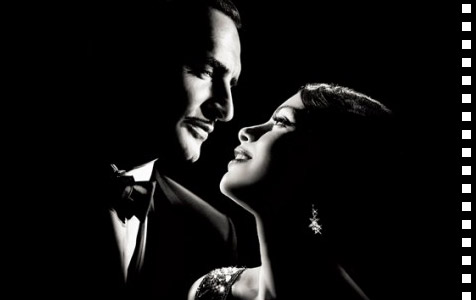The Artist – Michel Hazanavicius. Silence is Golden

Silence is golden
The Artist – Michel Hazanavicius
A film that unites critics; but I suspect divides cinema-goers. I find myself with a foot in both camps. The Artist is almost entirely silent throughout its 100 minutes running time. Cleverly and I think effectively, Hazanavicius has created an impressive blend of form and content: telling his Singin’ in The Rainy story obversely through the superseded silent medium rather than its loud, upstart successor. If Singin’ In The Rain exploits the humour and musical possibilities that sound provided; The Artist is an homage to what was lost; its tone nostalgic about the reliance on expression and physicality the necessities of silent cinema imposed upon directors and artists alike.
It will be tedious to link all parallels with Singin’ in The Rain throughout this piece so I will leave you dear reader to note many of them in passing. George Valentin is a Silent Movie star oozing charm and vanity in equal measure. Hogging the limelight and the public adoration, he has a totally chance meeting with Peppy Miller – besotted fan and wannabe star. The press pick up the ‘star-meets-unknown-pretty-girl’ and Peppy is ‘discovered’. Both good tap-dancers this shared skill is what connects the two.
With the advent of sound Valentin’s latest movie bombs and gradually Peppy’s flapper-fun dancing and voice make her the golden girl of the new craze for sound. True to his vision, Hazanavicius brilliantly conveys this transition while remaining within the silent film format. This gives The Artist a totally different tone to Singin’ in the Rain. The silent movie genre of Chaplin and Keaton is perfect to convey the pathos and sadness of Valentin’s decline and fall onto hard times and Peppy’s concern and desire to help him without offending his pride.
If Singin’ celebrated the brash, noisy fun of the future, The Artist offers a quiet lament to the loss of the old; a paean to the past. Most critics express a deep, often purist reverence for the films of the Silent Movie era which perhaps explains the almost universal praise they have heaped on The Artist. That’s my problem: I can see that there is much to admire in some silent classics but if one looks at popular cinema and the stars who created the cinema-going habit, they mostly leave me cold. Sacrilege I know: but I very rarely find Chaplin funny and even the sublime dead-pannery of Keaton diminishes with repetition. I also find Chaplin’s little tramp far too sentimentally cloyingly cutesy and coy; much preferring Keaton’s bemused, perplexed, astonished stoicism before the onslaught of disaster the world throws at him.
Interestingly modern technology offers Hazanavicius a visual quality denied the directors of the Silent era. This frees his actors from the theatrical, exaggerated physical acting imposed by the limitations of the early technology. Performances in The Artist benefit therefore from a subtlety and reticence that adds depth and a degree of ‘innerness’ to the jerky gesturing of yesteryear. The cinematically critical close-up works better and differently inThe Artist than its rare use in the old silent era.
There is no denying that The Artist has style, panache and elegance; it pace and editing is beautifully and seamless supported throughout by Ludovic Bource’s original soundtrack; as vital here as the musical accompaniment was to the original silent movies. It has an endearing innocence and charm to carry most people through the challenging absence of words and sound effects. The film also builds to a vivacious climax that is full of sheer exuberance and joie de vivre.
Jean Dujardin and Bérénice Bejo carry the lead roles lightly, ably supported by the occasional familiar face like John Goodman, Macolm McDowell and James Cromwell. It is also a labour of love; for its general critical success could not have been predicted, so in a play-safe repetitive industry, the sheer innovation and artistic courage to challenge the general public with something truly different and requiring some effort – must be recognised and honoured.
I think most people will enjoy The Artist; many will absolutely adore it. I’m in the first category because I have never bought in to the purist philosophy that sees imagery as the ‘essence’ of cinema and the use of words and dialogue as an unfortunate compromise.
For me the Silent movie era with one or two notable exceptions is to Modern cinema what mime was to the Theatre. Interesting – but limited. And in the immortal words of Sam Malone in response to Diane Chambers’ Arty claim that “everyone loves a Mime” – “no: everyone hates a Mime” (Cheers).
This one offers an interesting struggle – Box Office vs Critical Acclaim. It will be interesting to see how that pans out.
Filed under: Michel Hazanavicius

